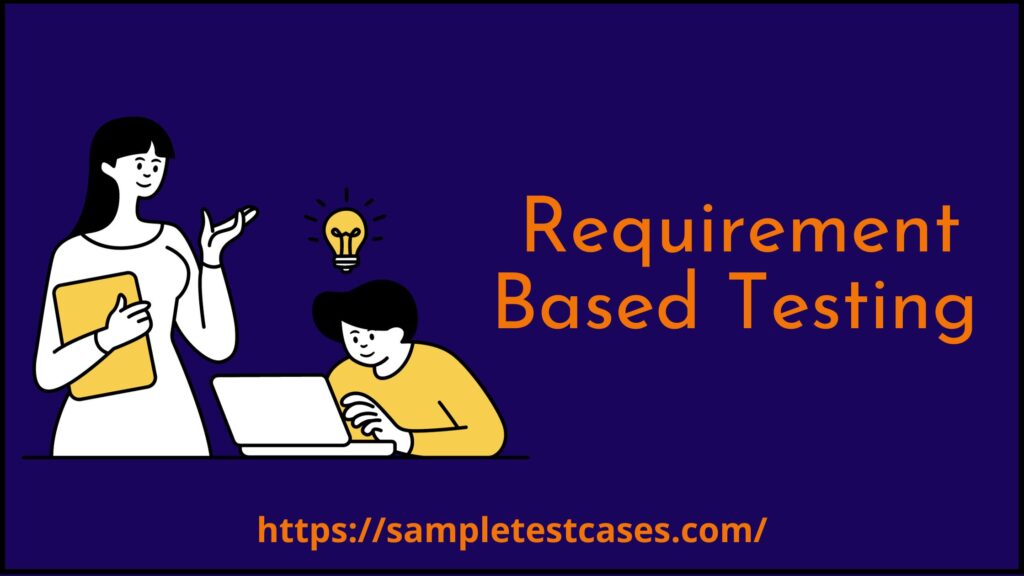In this article, we will explore what Requirement Based Testing is, its significance, best practices, and how it enhances software quality. In the dynamic world of software development, the alignment of software with user requirements is paramount. To achieve this, one of the most effective and structured testing approaches is “Requirement Based Testing.” This method ensures that software not only meets its functional specifications but also aligns with the broader requirements and expectations of its users.
What is Requirement Based Testing?
Requirement Based Testing, as the name suggests, is a software testing approach that centers around the software’s requirements. It involves systematically testing the software to ensure that it meets the specified requirements, both functional and non-functional. The goal is to validate that the software aligns with the intended purpose and that it satisfies the needs of its users.
This approach is often used in conjunction with other testing methodologies, such as black-box testing and white-box testing, to ensure comprehensive coverage of requirements.
Importance of Requirement Based Testing
Requirement Based Testing holds significant importance in the software development process for several reasons:
- Alignment with User Needs: It ensures that the software aligns with the needs and expectations of its users, ultimately leading to user satisfaction.
- Minimized Scope Creep: By continuously validating against requirements, it helps prevent scope creep, which occurs when additional features or changes are introduced without proper validation.
- Early Issue Identification: Requirement Based Testing helps identify issues and deviations from requirements at an early stage, reducing the cost and effort required for later corrections.
- Risk Mitigation: It mitigates the risk of delivering software that does not meet user expectations, which could result in user dissatisfaction and business losses.
- Verification of Compliance: For software in regulated industries, such as healthcare and finance, Requirement Based Testing verifies compliance with industry-specific regulations and standards.
Best Practices for Requirement Based Testing
To ensure effective Requirement Based Testing, consider the following best practices:
- Thorough Requirement Analysis: Invest time in a comprehensive analysis of software requirements to understand their scope, complexity, and dependencies.
- Traceability: Establish traceability between requirements and test cases to ensure that each requirement cover by one or more test cases.
- Clear Test Objectives: Define clear objectives and success criteria for each test case, making it easier to determine whether the requirement has been met.
- Test Documentation: Maintain detailed documentation of test cases, results, and any issues or deviations encountered during testing.
- Regression Testing: Implement regression testing to ensure that changes or updates to the software do not negatively impact previously tested requirements.
- Collaboration: Promote collaboration between developers, testers, and stakeholders to ensure a shared understanding of requirements and testing outcomes.
- Automation: Consider automating Requirement Based Testing where feasible, as it can increase efficiency and coverage, especially for repetitive test cases.
Requirement Based Testing in Agile and Waterfall Environments
Requirement Based Testing can be adapted to different software development methodologies, including Agile and Waterfall:
- Agile: In Agile development, This Testing conduct iteratively and continuously throughout the development cycle. It aligns with the Agile principle of delivering working software that meets user needs in each sprint.
- Waterfall: In Waterfall development, This Testing is typically conducted at specific stages, such as system testing or user acceptance testing, as part of a structured and sequential approach.
Conclusion
Requiremen Based Testing is a structured and essential component of software quality assurance. It ensures that software not only functions correctly but also meets the broader requirements and expectations of its users. By systematically validating against requirements, organizations can reduce the risk of delivering subpar software, enhance user satisfaction, and maintain compliance with industry regulations. As software development continues to evolve, This Testing remains a cornerstone of delivering high-quality software that meets user needs and expectations.
- Agile Testing
- GUI Testing
- Continuous Performance Testing
- SaaS Testing
- SQL Query Interview Questions
- Manual Testing Interview Questions
- SQL Interview Questions for Data Analysts
- QA Interview Questions
- Exploratory Testing In Agile
- Exploratory Testing
- Usability Testing
- Performance Testing
- Regression Testing
- CRM Testing
- User Acceptance Testing
